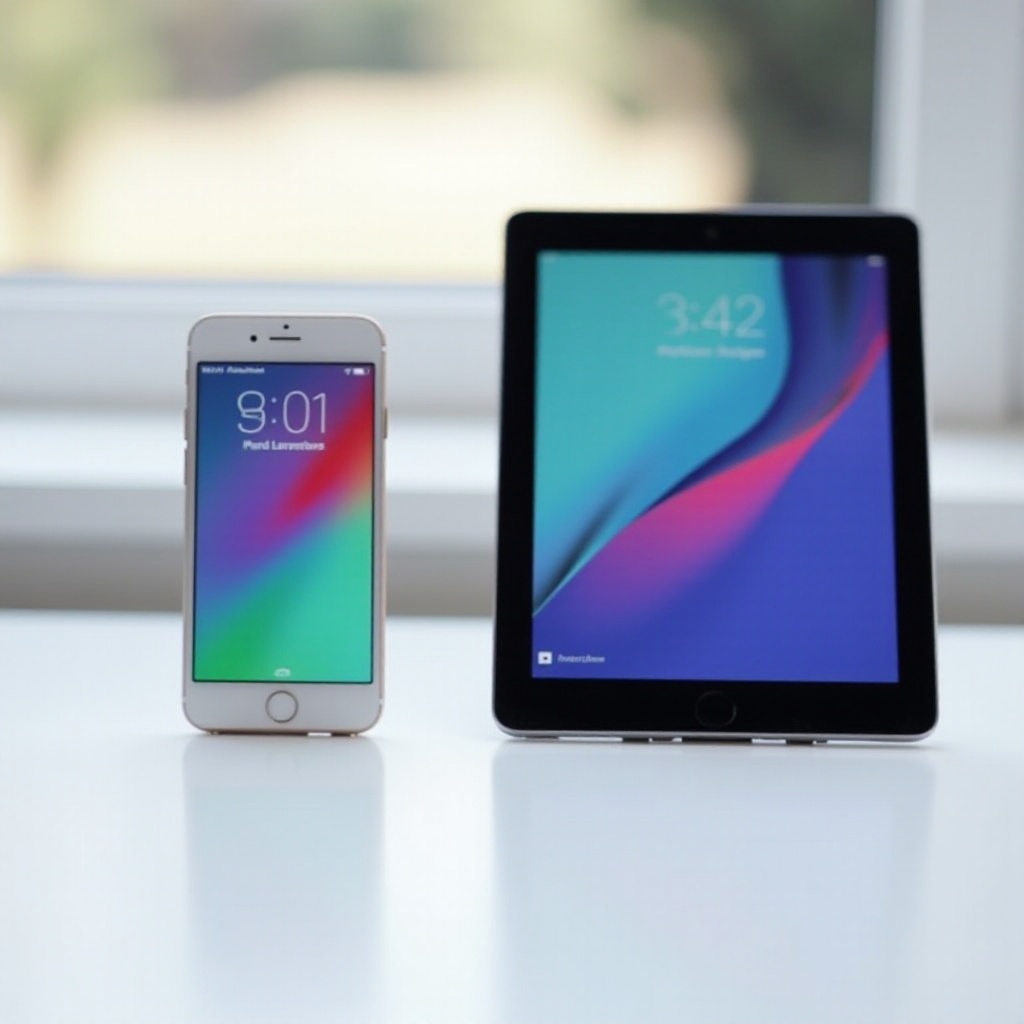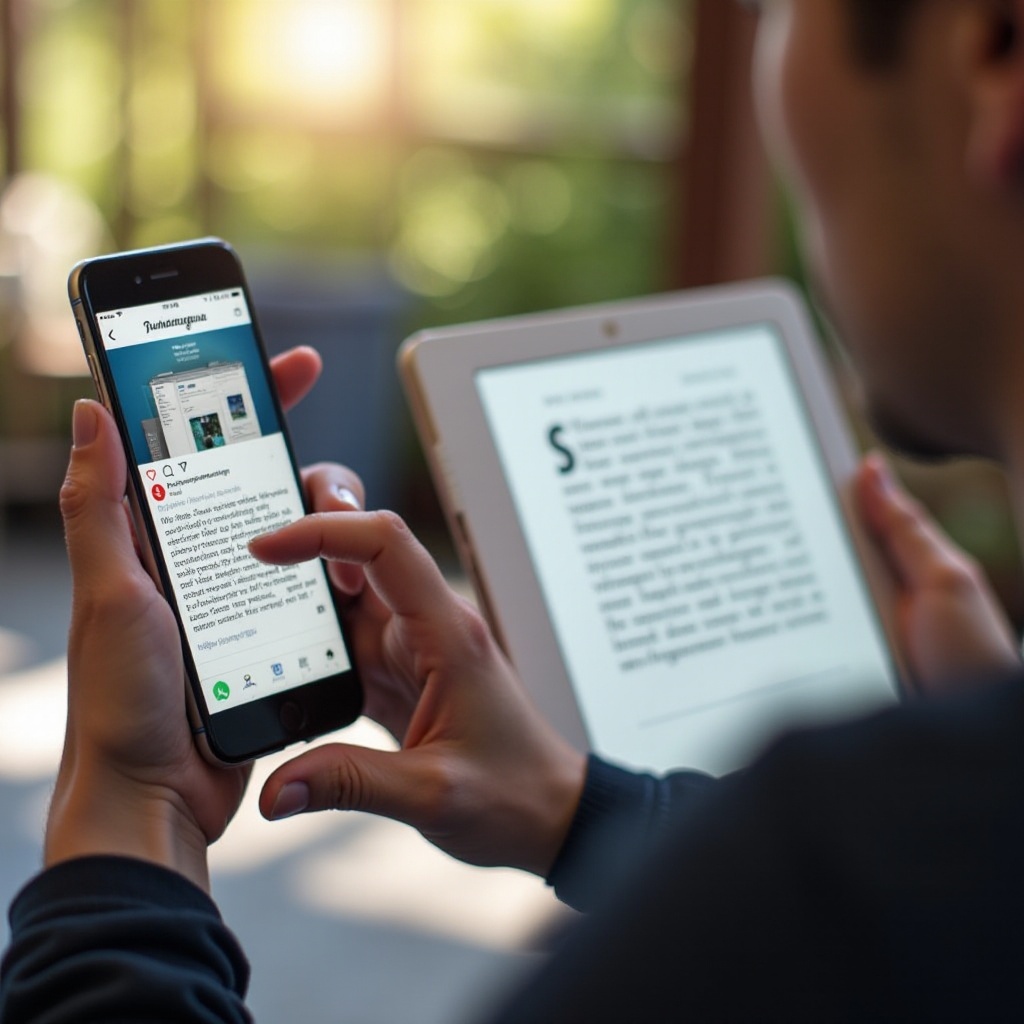Introduction
When choosing between phones and tablets, understanding the differences in their screens is crucial. Both devices serve distinct purposes and their screens play a significant role in user experience. This article will delve into the various aspects differentiating phone screens from tab screens, including size, resolution, display technology, usability, functionality, durability, and overall impact on user experience.

Screen Size and Resolution
One of the most obvious differences between phones and tablets is screen size. Phone screens typically range from 5 to 7 inches, making them compact and easy to manage with one hand. Tablets, on the other hand, usually start at 7 inches and can go up to 13 inches or more. This larger size is ideal for tasks that require a bigger display, such as watching videos, reading, or multitasking.
Resolution is another area where these devices differ. Phones often boast higher pixel density because users are likely to hold them closer to their faces. A typical phone might feature a resolution of 1080 x 2400 pixels or more, resulting in crisp, clear images. Tablets, due to their larger display area, may have similar resolutions but lower pixel density, around 1200 x 1920 or 2048 x 2732 pixels, which still provides good image quality.
Both phone and tablet screens offer excellent visual experiences, but the choice largely depends on your primary use. A phone’s higher pixel density makes text and small images sharper, whereas a tablet’s larger screen enhances the viewing experience for media consumption and productivity tasks.
Display Technologies
The technology behind the screens also varies between phones and tablets. Phones frequently utilize OLED or AMOLED displays, known for their vibrant colors, deep blacks, and energy efficiency. These displays are particularly found in high-end smartphones. Cheaper models may use LCD technology, which provides good color accuracy and brightness but lacks the contrast and power efficiency of OLED screens.
Tablets, on the other hand, often use IPS LCD technology. IPS displays offer wide viewing angles and excellent color reproduction, making them perfect for media consumption and collaborative work. Some high-end tablets, like the iPad Pro, use Mini-LED or even OLED technology, providing superior color accuracy and brightness.
The advancements in display technology ensure both phones and tablets offer users a pleasing visual experience. The choice between them usually hinges on specific needs like color accuracy for creative work or battery life for extended usage.

Usability and Functionality
Usability is shaped significantly by screen size. Phones, with their smaller screens, are perfect for quick tasks such as checking notifications, making calls, or sending messages. Their compact size allows them to be used comfortably with one hand, which is convenient when on the go.
Tablets, with their larger screens, excel in tasks that benefit from more screen real estate. Activities like sketching, reading eBooks, watching videos, and multitasking with split-screen functionality are more enjoyable and productive on a tablet. Moreover, tablets often support styluses, enhancing tasks such as note-taking and drawing.
The difference in screens thus directly influences the functionality each device offers. Phones are ideal for day-to-day quick tasks and portability, while tablets serve as excellent devices for more immersive and productive activities.
Durability and Build Quality
Durability is another aspect where screens of phones and tablets can differ significantly. Phones are designed to be carried around intensely; thus, durability and build quality are paramount. Many modern smartphones come with Gorilla Glass or similar toughened glass to resist scratches and minor drops. Manufacturers also use oleophobic coatings to reduce fingerprints and smudges.
Tablets are often treated with equal attention to durability but sometimes lag behind due to their size. Larger screens are generally more vulnerable to cracks if dropped and are harder to protect with rugged cases or screen protectors. However, many high-end tablets also use durable materials and protective glass to enhance their longevity.
While both devices aim to provide robust build quality, the larger surface area of tablets inherently makes them more susceptible to damage compared to phones. Users should consider additional protective accessories for tablets to maintain their condition.
Impact on User Experience
The differences in screens significantly impact user experience. A phone’s smaller, high-resolution screen is ideal for quick, spontaneous tasks. It fits comfortably in a pocket, making it always accessible yet unobtrusive. This mobility caters to users who prioritize communication and are always on the go.
Tablets, with their expansive screens, offer a different type of user experience. They enhance activities that require detailed viewings, such as editing documents, graphic design, and watching movies. The extra screen real estate means more information can be displayed at once, reducing the need for constant scrolling and zooming.
Moreover, gaming enthusiasts might prefer tablets for their larger displays, which provide a more immersive experience. However, they may still rely on phones for their portability when a quick gaming session is needed during travels.
Ultimately, the choice depends on individual needs and preferences. Phones provide easy access and portability, whereas tablets offer a more engaging and productive environment for various tasks.

Conclusion
In conclusion, understanding the differences between phone and tablet screens helps in making an informed decision based on personal or professional needs. Whether it is the compact usability of a phone or the expansive functionality of a tablet, both devices offer unique advantages that cater to different user requirements. By recognizing these differences, you can choose the device that best fits your lifestyle and work habits.
Frequently Asked Questions
What are the main differences in resolution between phone screens and tab screens?
Phone screens generally have higher pixel density due to their smaller size, resulting in sharper images. Tablet screens, being larger, usually have similar resolutions but lower pixel density.
How does the screen size affect the usability of phones vs. tablets?
Phones, with smaller screens, are better for quick, on-the-go tasks and one-handed use. Tablets, with larger screens, excel in media consumption, productivity tasks, and detailed work.
Are there significant differences in the material used for phone screens and tab screens?
Both use durable materials, often Gorilla Glass. However, phones focus more on durability for portability, while tablets emphasize broader viewing angles and color accuracy for enhanced usability.